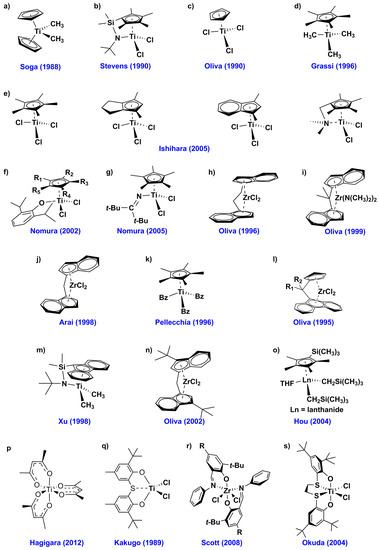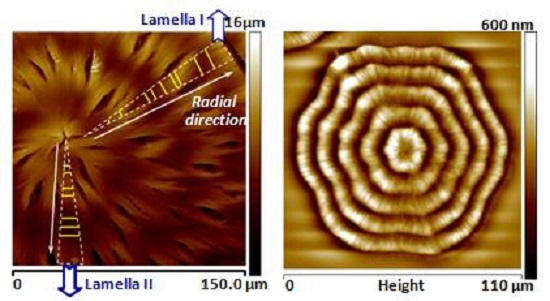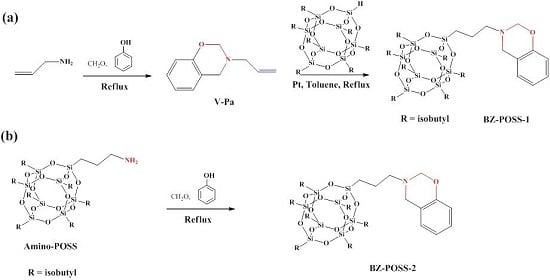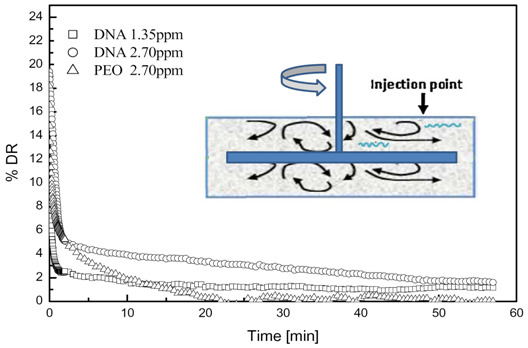Featured Mini Reviews in Polymer Science
A topical collection in Polymers (ISSN 2073-4360).
Share This Topical Collection
Editor
 Prof. Dr. Alexander Böker
Prof. Dr. Alexander Böker
 Prof. Dr. Alexander Böker
Prof. Dr. Alexander Böker
E-Mail
Website
Collection Editor
Lehrstuhl für Polymermaterialien und Polymertechnologie, University of Potsdam, 14476 Potsdam-Golm, Germany
Interests: self-assembly of block copolymers and nanoparticles; multi-functional patchy particles; Pickering-Emulsions; protein-polymer conjugates; integration of biological functions into polymeric materials
Topical Collection Information
Dear Colleagues,
In the past, Polymers followed a strategy aiming at highlighting important topics of polymer science with dedicated collections and reviews. As it turned out that many of these selected topics would fill more than just one collection being state of the art and worthy of more than one review, we decided to set up a new series of Topical Collections to keep stimulating discussion of hot topics throughout the academic year. Within this new series, we will publish contributed and invited mini-reviews with a clear focus on a certain hot topic. We hope to provide our readers with new and stimulating insights relating to recent developments in the field and look forward to receiving your contributions.
Prof. Dr. Alexander Böker
Guest Editor
Published Papers (6 papers)
Open AccessReview
Particle Distribution of Solid Flame Retardants in Infusion Moulded Composites
by
Ákos Pomázi and Andrea Toldy
Cited by 28 | Viewed by 6059
Abstract
Resin transfer moulding (RTM) is commonly used for the production of high-performance fibre-reinforced polymer composites. In numerous application areas, the addition of fillers is necessary to enhance some properties of the polymer matrix or provide it with additional properties, such as flame retardancy.
[...] Read more.
Resin transfer moulding (RTM) is commonly used for the production of high-performance fibre-reinforced polymer composites. In numerous application areas, the addition of fillers is necessary to enhance some properties of the polymer matrix or provide it with additional properties, such as flame retardancy. As many of the applied additives are solid phase, the reinforcement layers may filter the solid phase additive particles during RTM, resulting in a non-uniform distribution and uneven performance. Consequently, the proper distribution of the solid phase additives in composites is of key importance. This review primarily aims at facilitating the production of flame retarded structural composites by RTM in cases where the required fire performance can only be achieved with solid additives. First, the parameters influencing the particle distribution, along with the models describing it, are reviewed. Then, analytical methods for determining the particle distribution in composites manufactured by RTM are presented. Finally, the possible solutions to improve the particle distribution of solid phase additives are outlined.
Full article
►▼
Show Figures
Open AccessReview
Olefin–Styrene Copolymers
by
Nunzia Galdi, Antonio Buonerba and Leone Oliva
Cited by 18 | Viewed by 10308
Abstract
In this review are reported some of the most relevant achievements in the chemistry of the ethylene–styrene copolymerization and in the characterization of the copolymer materials. Focus is put on the relationship between the structure of the catalyst and that of the obtained
[...] Read more.
In this review are reported some of the most relevant achievements in the chemistry of the ethylene–styrene copolymerization and in the characterization of the copolymer materials. Focus is put on the relationship between the structure of the catalyst and that of the obtained copolymer. On the other hand, the wide variety of copolymer architecture is related to the properties of the material and to the potential utility.
Full article
►▼
Show Figures
Open AccessReview
Cracks in Polymer Spherulites: Phenomenological Mechanisms in Correlation with Ring Bands
by
Eamor M. Woo and Graecia Lugito
Cited by 18 | Viewed by 12651
Abstract
This article reviews possible mechanisms of various crack forms and their likely correlations with interior crystal lamellae and discontinuous interfaces in spherulites. Complex yet periodically repetitive patterns of cracks in spherulites are beyond attributions via differences in thermal expansion coefficients, which would cause
[...] Read more.
This article reviews possible mechanisms of various crack forms and their likely correlations with interior crystal lamellae and discontinuous interfaces in spherulites. Complex yet periodically repetitive patterns of cracks in spherulites are beyond attributions via differences in thermal expansion coefficients, which would cause random and irregular cracks in the contract direction only. Cracks in brittle polymers such as poly(
l-lactic acid) (PLLA), or poly(4-hydroxyl butyrate) (PHB), or more ductile polymers such as poly(trimethylene terephthalate) (PTT) are examined and illustrated, although for focus and demonstration, more discussions are spent on PLLA. The cracks can take many shapes that bear extremely striking similarity to the ring-band or lamellar patterns in the same spherulites. Crack patterns may differ significantly between the ring-banded and ringless spherulites, suggesting that the cracks may be partially shaped and governed by interfaces of lamellae and how the lamellar crystals assemble themselves in spherulites. Similarly, with some exceptions, most of the cracks patterns in PHB or PTT are also highly guided by the lamellar assembly in either ring-banded spherulites or ringless spherulites. Some exceptions of cracks in spherulites deviating from the apparent crystal birefringence patterns do exist; nevertheless, discontinuous interfaces in the initial lamellae neat the nuclei center might be hidden by top crystal over-layers of the spherulites, which might govern crack propagation.
Full article
►▼
Show Figures
Open AccessReview
Polybenzoxazine/Polyhedral Oligomeric Silsesquioxane (POSS) Nanocomposites
by
Mohamed Gamal Mohamed and Shiao-Wei Kuo
Cited by 75 | Viewed by 14549
Abstract
The organic/inorganic hybrid materials from polyhedral oligomeric silsesquioxane (POSS, inorganic nanoparticles) and polybenzoxazine (PBZ) have received much interesting recently due to their excellent thermal and mechanical properties, flame retardance, low dielectric constant, well-defined inorganic framework at nanosized scale level, and higher performance relative
[...] Read more.
The organic/inorganic hybrid materials from polyhedral oligomeric silsesquioxane (POSS, inorganic nanoparticles) and polybenzoxazine (PBZ) have received much interesting recently due to their excellent thermal and mechanical properties, flame retardance, low dielectric constant, well-defined inorganic framework at nanosized scale level, and higher performance relative to those of non-hybrid PBZs. This review describes the synthesis, dielectric constants, and thermal, rheological, and mechanical properties of covalently bonded mono- and multifunctionalized benzoxazine POSS hybrids, other functionalized benzoxazine POSS derivatives, and non-covalently (hydrogen) bonded benzoxazine POSS composites.
Full article
►▼
Show Figures
Open AccessFeature PaperReview
Design and Utility of Metal/Metal Oxide Nanoparticles Mediated by Thioether End-Functionalized Polymeric Ligands
by
Shumaila Razzaque, Syed Zajif Hussain, Irshad Hussain and Bien Tan
Cited by 48 | Viewed by 12671
Abstract
The past few decades have witnessed significant advances in the development of functionalized metal/metal oxide nanoparticles including those of inorganic noble metals and magnetic materials stabilized by various polymeric ligands. Recent applications of such functionalized nanoparticles, including those in bio-imaging, sensing, catalysis, drug
[...] Read more.
The past few decades have witnessed significant advances in the development of functionalized metal/metal oxide nanoparticles including those of inorganic noble metals and magnetic materials stabilized by various polymeric ligands. Recent applications of such functionalized nanoparticles, including those in bio-imaging, sensing, catalysis, drug delivery, and other biomedical applications have triggered the need for their facile and reproducible preparation with a better control over their size, shape, and surface chemistry. In this perspective, the multidentate polymer ligands containing functional groups like thiol, thioether, and ester are important surface ligands for designing and synthesizing stable nanoparticles (NPs) of metals or their oxides with reproducibility and high yield. These ligands have offered an unprecedented control over the particle size of both nanoparticles and nanoclusters with enhanced colloidal stability, having tunable solubility in aqueous and organic media, and tunable optical, magnetic, and fluorescent properties. This review summarizes the synthetic methodologies and stability of nanoparticles and fluorescent nanoclusters of metals (Au, Ag, Cu, Pt, and other transition metal oxides) prepared by using thioether based ligands and highlights their applications in bio-imaging, sensing, drug delivery, magnetic resonance imaging (MRI), and catalysis. The future applications of fluorescent metal NPs like thermal gradient optical imaging, single molecule optoelectronics, sensors, and optical components of the detector are also envisaged.
Full article
►▼
Show Figures
Open AccessReview
Turbulent Drag Reduction with Polymers in Rotating Disk Flow
by
Cheng Hai Hong, Chun Hag Jang and Hyoung Jin Choi
Cited by 21 | Viewed by 9138
Abstract
The frictional drag in turbulent flow can be drastically reduced by the addition of minute amounts of suitable linear flexible high-molecular-weight polymers, and the various physical characteristics of the polymers used are known to be closely related to the drag reduction efficiency. This
[...] Read more.
The frictional drag in turbulent flow can be drastically reduced by the addition of minute amounts of suitable linear flexible high-molecular-weight polymers, and the various physical characteristics of the polymers used are known to be closely related to the drag reduction efficiency. This feature article briefly reviews polymer additives and factors in the system affecting turbulent drag reduction in external flow, more specifically in a rotating disk flow.
Full article
►▼
Show Figures
Planned Papers
The below list represents only planned manuscripts. Some of these
manuscripts have not been received by the Editorial Office yet. Papers
submitted to MDPI journals are subject to peer-review.
Dear Colleagues,
In the past, Polymers followed a strategy aiming at highlighting important topics of polymer science with dedicated special issues and reviews. As it turned out that many of these selected topics would fill more than just one special issue being state of the art and worthy of more than one review, we decided to set up a new series of Topical Collections to keep stimulating discussion of hot topics throughout the academic year. Within this new series, we will publish contributed and invited mini-reviews with a clear focus on a certain hot topic. We hope to provide our readers with new and stimulating insights relating to recent developments in the field and look forward to receiving your contributions.
Prof. Dr. Alexander Böker
Guest Editor












